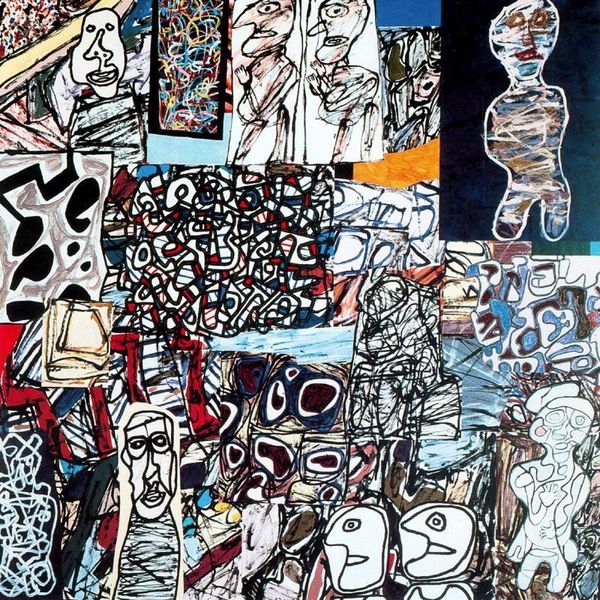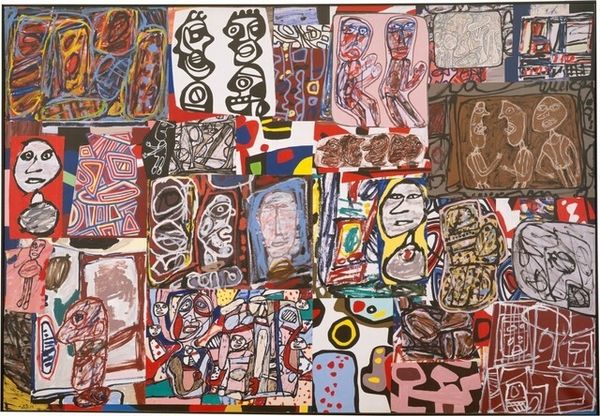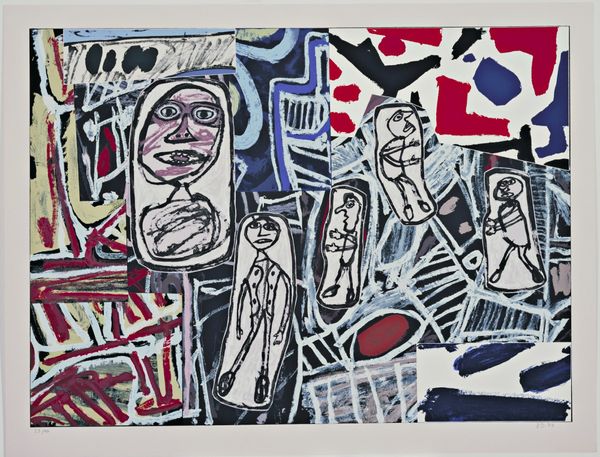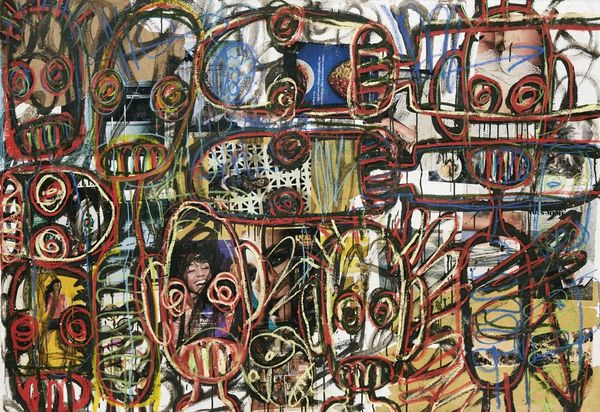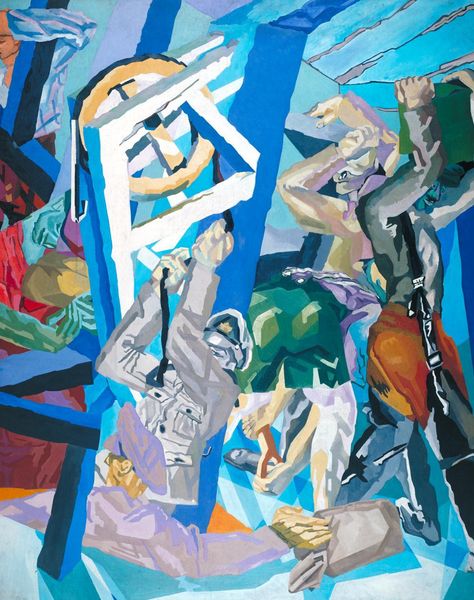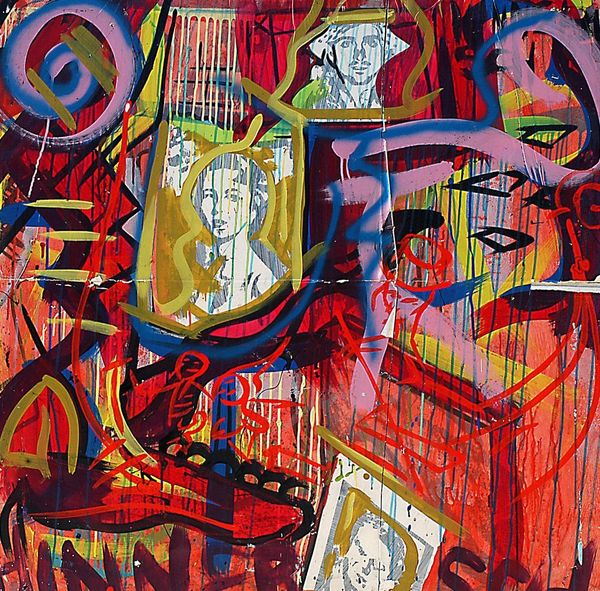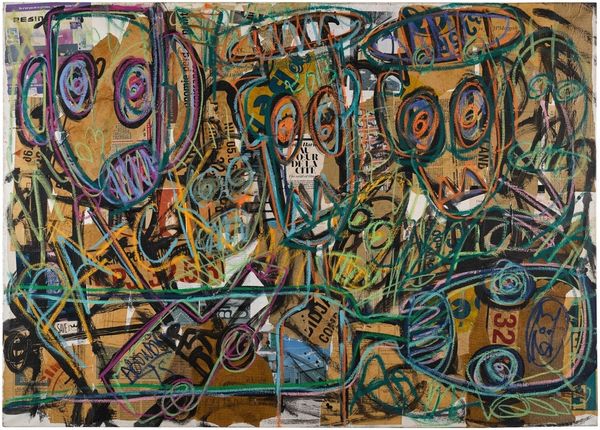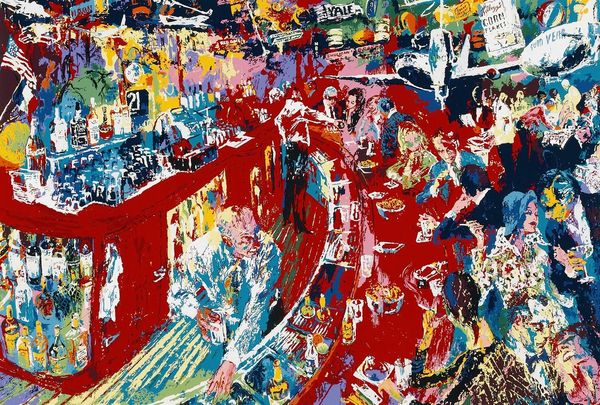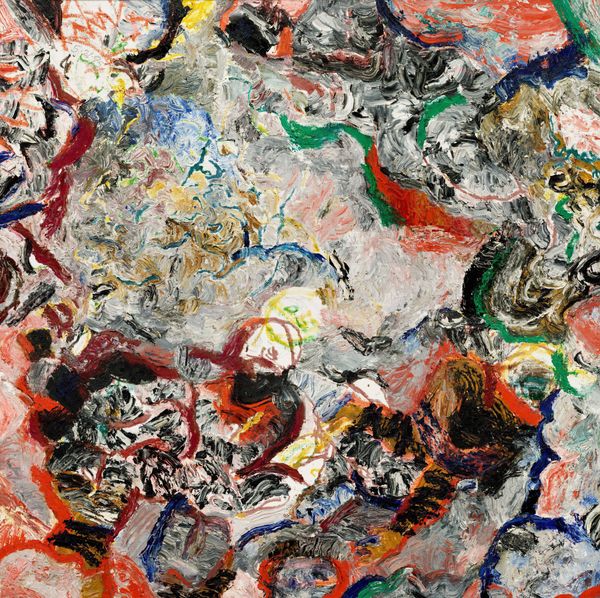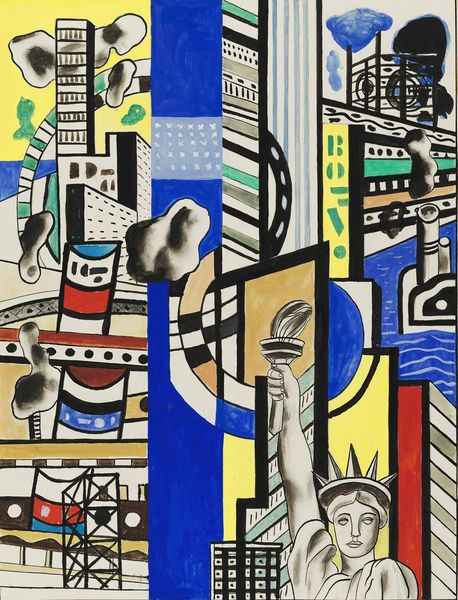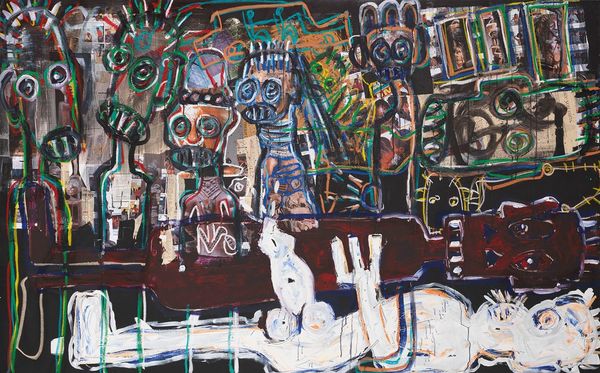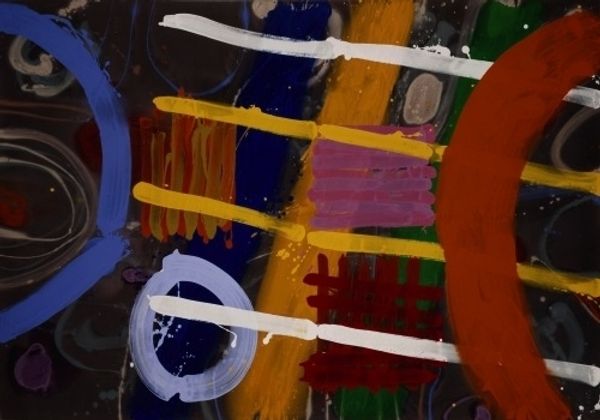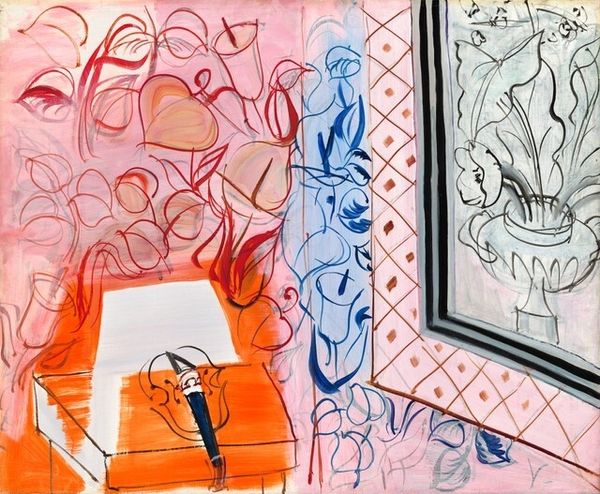
Dimensions: support: 2100 x 3390 mm
Copyright: © ADAGP, Paris and DACS, London 2014 | CC-BY-NC-ND 4.0 DEED, Photo: Tate
Curator: Jean Dubuffet's "Vicissitudes," a large-scale work in the Tate collection, immediately strikes me as bold in its materiality. The scale is impressive—over two meters high and three wide. Editor: I find it chaotic, almost aggressively so. The sheer density of figures and shapes feels like a visual representation of social unrest, of the constant push and pull of different forces. Curator: Absolutely. Dubuffet’s focus was on challenging traditional art materials. In “Vicissitudes,” he's really pushing the possibilities of paint, questioning the very nature of art making. What is fine art and what is simply craft? Editor: And who gets to decide? Dubuffet's work, and this piece in particular, opens up a crucial dialogue on the politics of representation and the power dynamics inherent in artistic creation. It is anything but innocuous. Curator: It's a challenging piece, undoubtedly, and one that prompts us to reconsider the relationship between form, function, and social critique. Editor: Indeed. It's a mirror reflecting the complexities and contradictions of our world, a world Dubuffet clearly saw as far from harmonious.
Comments
Join the conversation
Join millions of artists and users on Artera today and experience the ultimate creative platform.
tate 7 months ago
⋮
'Vicissitudes' was made by glueing together paintings on paper that the artist had allowed to accumulate on the floor of his studio. Their chance arrangements and overlappings gave Dubuffet the idea of cutting up the pieces and using them to make assemblages. It belongs to a series of about a hundred collages to which the artist gave the collective title 'Theatres of Memory'. This was because they combined evocations of a number of different places and scenes. Gallery label, September 2004
